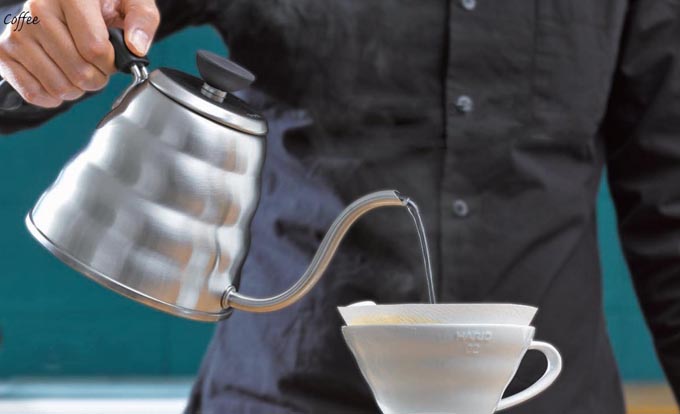
Although it’s mostly mass-produced and often served in generic, corporate environments today, coffee has been starting conversations, keeping people awake, and encouraging revolutionaries since at least the 16th century – and probably hundreds of years before that.
Coffee was once a carefully protected and even controversial beverage. It’s been banned, boycotted, smuggled, and used as the catalyst for more than one revolution.
Its origins are shrouded in mystery, but one thing is for sure: wherever it goes, change (and increased productivity!) always follows.
Nobody knows quite how coffee was discovered, but most legends point back to Ethiopia and a flock of particularly frisky goats or boisterous birds as the first to sample the coffee berry.
Upon noticing the energetic animals, someone tasted the berries the animals had been eating and noticed a boost in energy.
Other legends say that these berries were thrown into a fire – where they roasted and drew people in with their delicious aroma. They were then boiled, resulting in a rich, dark beverage with seemingly magical qualities.

After being discovered, coffee quickly spread into the Middle East, where religious adherents used it to stay awake during evening devotions.
Coffeehouses became centers of social interaction, chess-playing, and discussion and spread to Italy and Europe in the 16th and 17th centuries.
Spirited, caffeine-fueled (instead of ale-muddled) political and religious discussions became common in these establishments, and political leaders in both Europe and the Middle East tried to ban the drink and close the coffeehouses to stifle plots against the government.
Civic groups arose trying to encourage people to quit wasting time at coffeehouses drinking that imported “devil’s drink” – and stay home drinking good English beer instead!
But coffee’s appeal could not be denied, and it gradually became accepted across Europe and the Middle East as various leaders, including one pope, became fans.
The Dutch finally managed to acquire some of the carefully-guarded coffee plants in 1616 and raise them in a greenhouse in Amsterdam.
After attempting to cultivate coffee in India, the Dutch focused on their plantations in Java, still the location of highly-prized coffee varieties today.
Other nations soon found ways to get their own seeds – some going to great lengths to preserve their plants on the long voyage from European hothouses to the tropical regions where coffee plants can thrive.
In the early 1700s, one French naval officer took a cutting from a coffee plant with him back to his post on the island of Martinique in the New World.
He kept the cutting under glass to protect it from the rough conditions at sea and even used his own water ration to keep it alive when the ship became becalmed.
That single cutting produced what would become more than 17 million plants only 50 years later.
Tea-drinking was more common in North America until the American Revolution severed ties with the British Empire.
The Boston Tea Party – where American revolutionaries threw a shipload of tea into the Boston Harbor to protest King George’s tax policies – was even planned in a Massachusetts coffeehouse.
Later, the New York Stock Exchange would also find its beginnings in a humble coffeehouse in New York.
Coffee is still the subject of some controversy today; unfair trade and production practices remain in many areas after a long legacy of slavery and poor treatment of workers on coffee plantations.
More and more coffee drinkers are becoming aware of movements like Fair Trade that seek to level the playing field and give small farmers fairer wages for their work.
This improves the supply chain, allowing individual farmers with good practices to compete with big coffee producers.
So, the next time you brew up a cup to help you meet a deadline or accompany a conversation with a friend, take a moment and think about how far these beans have come to reach your cup.
The beans in your brew came from plants born in Ethiopia, cultivated in the Middle East, popularized in the coffeehouses of Europe, and shipped to the New World by the English, Dutch and French.
It fueled American revolutionaries and became a symbol of independence from England.
Now, we consume over 2.25 billion cups each day worldwide, and more people are learning how to turn their brew into something special, both on the carafe-wielding consumer side and for the people who have dedicated their lives to cultivating this fine beverage.
Have you invested in high-quality coffee and brewing methods? Or do you still enjoy a good, plain cup of joe?
About Mike Quinn
Mike Quinn spent 20 years in the US Army and traveled extensively all over the world. As part of his military service, Mike sampled coffee and tea from all virtually every geographic region, from the beans from the plantation of an El Salvadorian Army Colonel to "Chi" in Iraq to Turkish Coffee in the Turkish Embassy in Kabul, Afghanistan. He spent nearly a decade in the Republic of Korea where he was exposed to all forms of traditional teas. Mike formerly owned and operated Cup And Brew, an online espresso and coffee equipment retail operation.




When it comes to coffee maker, my personal favorite is that OXO On Barista Brain Coffee Maker. It’s a great coffee machine that copies the pour over method of brewing that’s why it can make you a great hot coffee! It’s simply makes my simple day great.